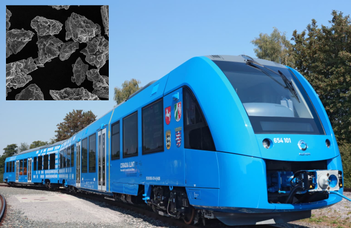Hydrogen storage

According to estimates, the Earth’s energy needs will be tripled by year 2050 compared to the millennium, so the exploration of alternative energy sources becomes increasingly urgent and essential. One of the fundamental problems to be solved is the drastic reduction of CO2 emission, which is responsible for the greenhouse effect. There has been a continuous interest in the integration of hydrogen into the energy sector in the last two decades, which can serve as the basis of the hydrogen-based energy economy. According to the concept, hydrogen can be produced from alternative energy sources (solar energy, geothermal, wind, biomass, etc.) and further can be applied in fuel cells, in which the chemical energy of the hydrogen is converted into electrical energy during an electrochemical reaction. Since the produced hydrogen can fall far from the place of use in both space and time, it must be stored. Currently, intensive research is focused on the development of solid-phase hydrogen storage systems. The great advantage of solid-stated storage is that the hydrogen density per unit volume is higher than storing hydrogen in gas or liquefied state. Among these systems, one of the most prominent candidate is magnesium, which can absorb 7.6 weight percent of hydrogen. Its low density is essential for mobile (on-board) applications.
In our recent research, nanocrystalline magnesium has been synthesized by high-energy ball milling (HEBM), which is one of the most widely used techniques for producing nanostructured materials. In a second step, we added traditional metal oxide catalysts and carbon nanotubes (CNT) to the ball-milled magnesium using a multi-stage production technology. During this process, the as-milled powder mixture is subjected to an extreme deformation by high pressure torsion (HPT). As a result of the shear strain generated by HPT in these magnesium-based materials, the metal oxide catalyst can promote the dissociation of the H2 molecules on the surface of the powder particles, which then can easily diffuse into the interior of the magnesium nanocrystals by the presence of CNTs resulting the formation of MgH2 phase. Lattice defects (dislocations) formed during deformation can further accelerate the diffusion of hydrogen atoms, significantly improving the rate of H-uptake and release.
Contact: Ádám Révész

